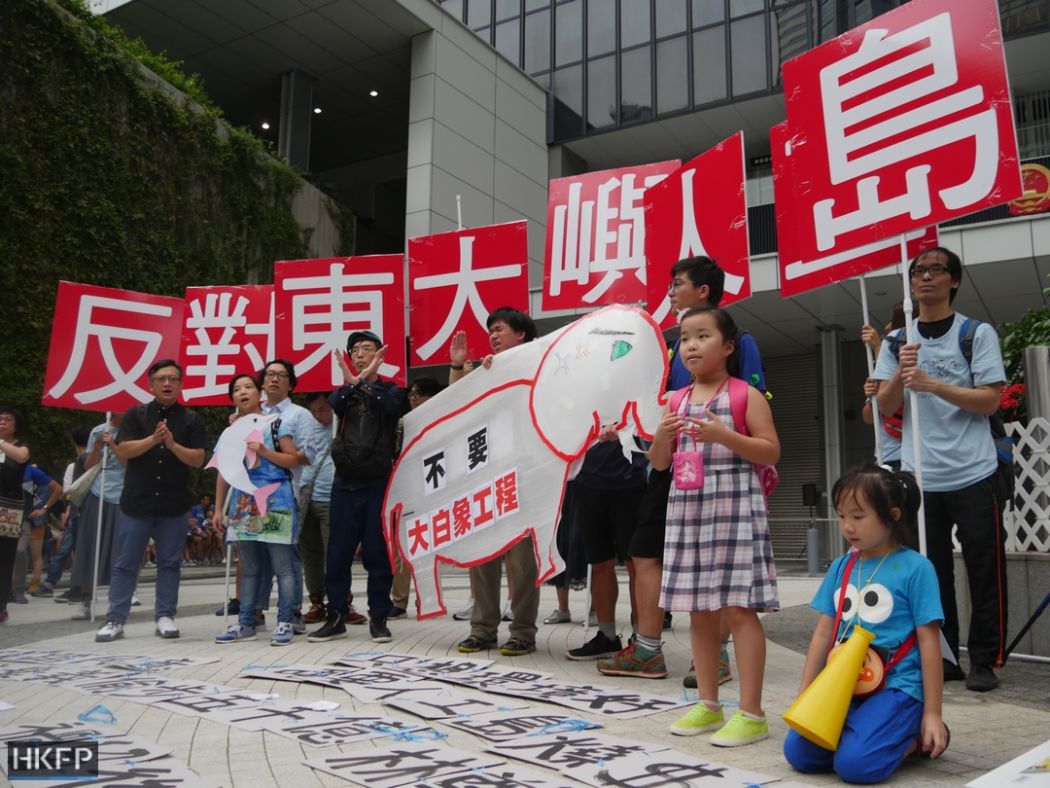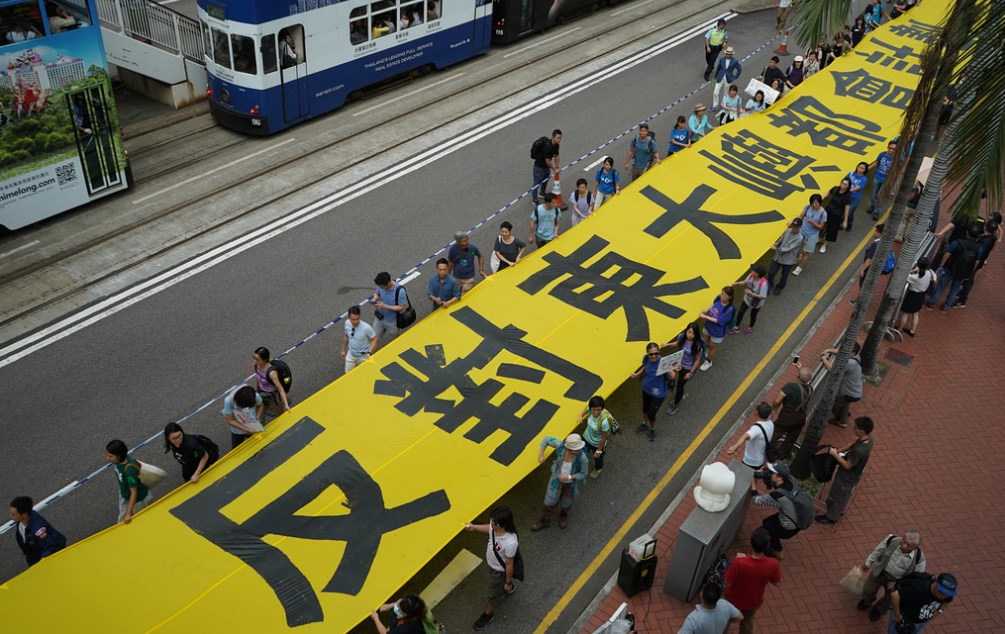There were some troubling indications at last Sunday’s East Lantau metropolis protest, organised by the Save Lantau Alliance. It appears Chief Executive Carrie Lam may have created her own Frankenstein’s monster.
In Mary Shelley’s classic novel, Dr. Frankenstein discovers the secret of creating human life – from nature. In contemporary Hong Kong, Mrs. Lam appears to believe she has discovered the secret to solving the city’s housing problem – from the sea.

The East Lantau Metropolis could be the political equivalent of the grotesque, sapient creature, created by Shelley’s fictional scientist. Frankenstein’s monster creates havoc, death and destruction for its creator and there are already worrying signs that Lam’s monstrous reclamation project, could also have calamitous and dramatic political consequences for her.
The gigantic 1,700-hectare land reclamation project, announced at the Chief Executive’s policy address, earlier this month and re-named Lantau Tomorrow Vision, might attract a few more unofficial names before it’s completed. Titles like White Elephant City, Tycoon Island and Insanity Reef, could be amongst the most popular contenders, judging by the sentiment and rhetoric at the protest.
Demonstrating has become a risky business in Hong Kong, so more than 5,000 people don’t give up their precious Sunday unless they feel passionately about an issue. The East Lantau reclamation policy has certainly ignited genuine widespread public fury and indignation.
It is not just green groups that are leading opposition to the project. And it is not just environmental issues that are provoking such strength of feeling.

“My objection is environmental and political,” says Michael, a software engineer, as we chatted outside Causeway Bay MTR station waiting for the march to proceed.
Like most of those on the march, Michael was a well-educated, moderate, middle-class Hongkonger – not a radical localist or zealous eco-warrior. Like most protestors in Hong Kong, he is not comfortable giving his full name and says he felt too intimidated to invite his friends along or even tell his parents he was participating. These days, non-compliance in Hong Kong can mean imprisonment, loss of career, public humiliation and restricted travel opportunities.
Like many others, he is angry – not just about the disastrous environmental impact to the city’s already abused and persecuted marine environment – but the estimated HK$1 trillion of fiscal reserves being heaped upon the project. He says no study has been carried out to investigate the environmental impact, or even cost-benefit for the city. Many on the march complained that official population forecasts show the project is not needed. Others complained that alternative land supply solutions, like the hundreds of hectares of brownfield sites in the New Territories, were not progressed further, simply because the government would not risk offending the vested interests that prop them up.
“They didn’t even finish the public consultation process,” shouts a man called Stan, a retired engineer pointing to that fact that results of the half-hearted consultation process have not yet been published.
Stan claims the scheme is little more than a government endorsed money laundering scheme so that Hong Kong’s bulging fiscal reserves can be transferred to Beijing via mainland construction companies.

His colourful theory may be dismissed as an unsubstantiated conspiracy theory but it betrays the strength of feeling about the injustice of this policy. No-one on this march thought the east Lantau metropolis had anything to do with the welfare or livelihood of ordinary citizens and that makes them cross. Very cross.
“Carrie Lam is now the trigger for public anger,” says one young female student from Shue Wan university who did not wish to give her name.
The dangers for the Chief Executive are threefold. First, though some student groups including Demosisto were represented at the protest, most of the attendees appeared to be mainstream Hongkongers, not political agitators. Secondly, at the core of the protest is not an intangible ideal like democracy or independence but a huge artificial island seven times the size of Cheung Chau, costing hundreds of billions of dollars of public money. Thirdly, the one legitimate area of protest and dissent often tolerated, to a surprising degree, on the Mainland is environmental issues and this is a very big one.
At the end of the Frankenstein saga, the scientist and the monster both come to an untimely death. Someone close to Mrs. Lam might wish to advise her to kill her new monster before it kills her.
